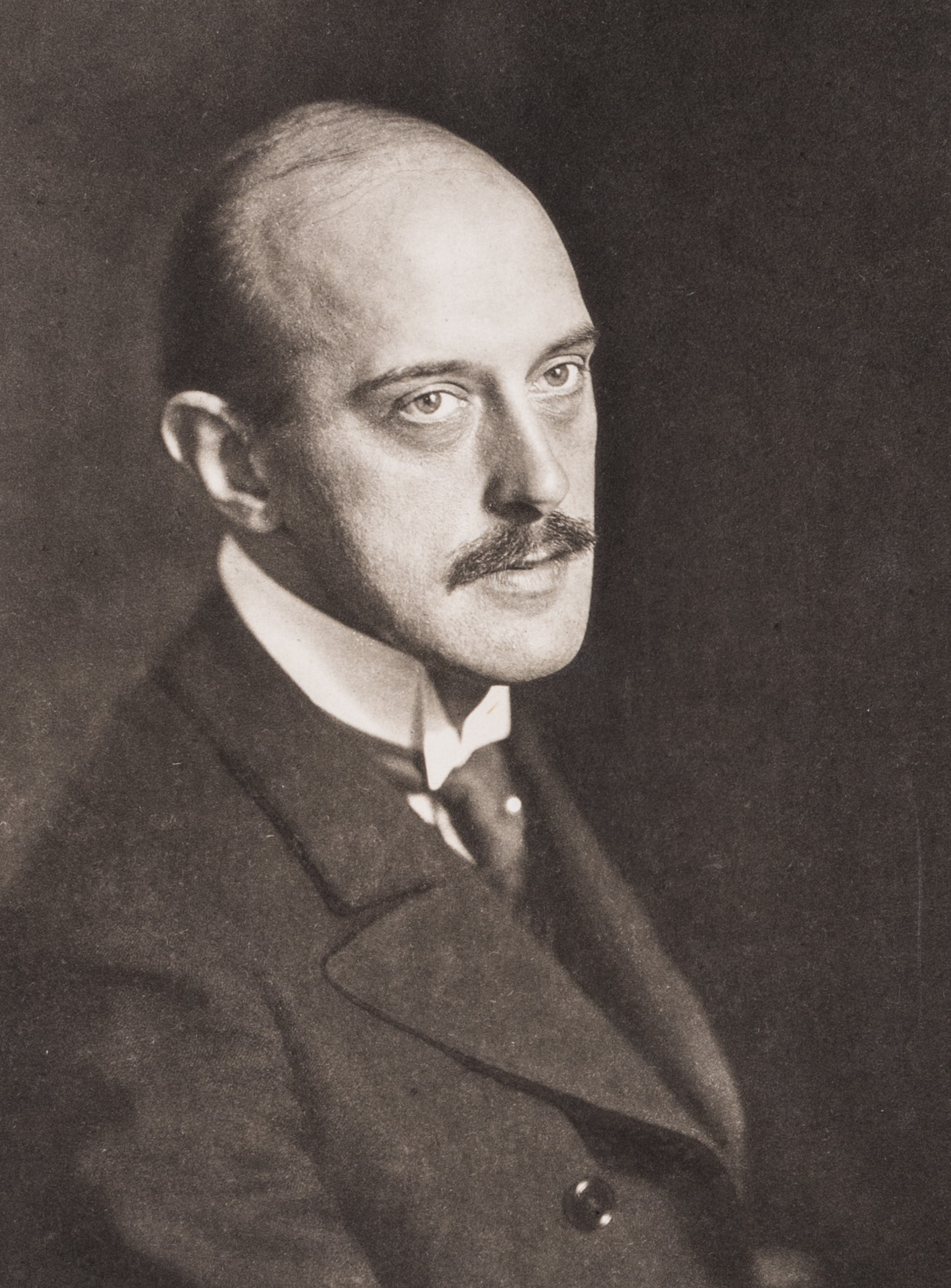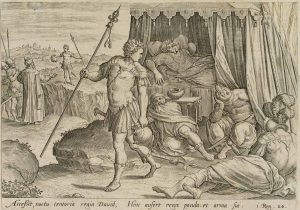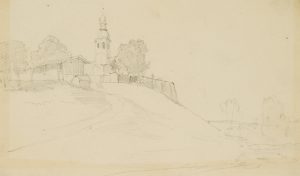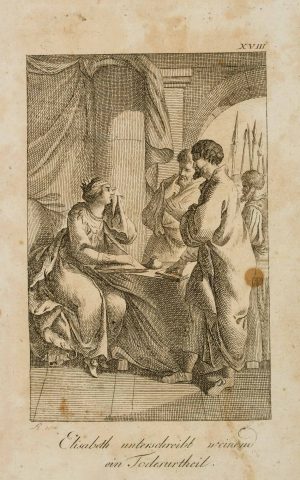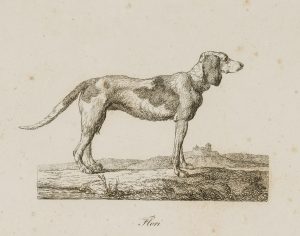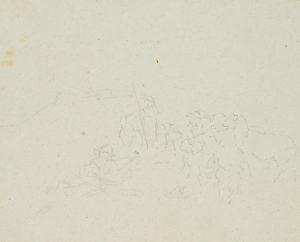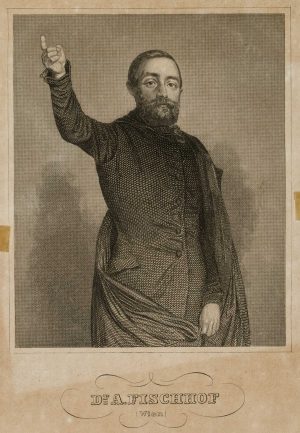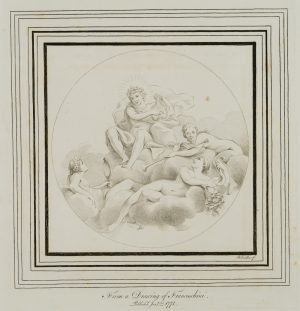Nach Nicola Perscheid (1864 Moselweiss – 1930 Berlin), Porträt des Komponisten Max von Schillings (1868-1933), , Photogravure
- Technik: Photogravure auf Papier
- Wasserzeichen: Buchstaben/Ziffern – Van Gelder Zonen – Datierung:
- Stempel: Unten mittig Blindstempel, Photographische Gesellschaft Berlin. Berlin. 20. Jahrhundert
- Bezeichnung: Unten im Druck bezeichnet: “Nicola Perscheid phot. 1907 | 8064 | Max Schillings | Photographische Gesellschaft Berlin”.
- Datierung:
- Beschreibung: Sitzporträt des Komponisten.
- Persönlichkeiten:
- Max von Schillings (1868 Düren – 1933 Berlin)
Deutscher Komponist, Dirigent und Theaterintendant. Schillings komponierte Bühnen- und Vokalwerke, Orchester- und Kammermusik. Seine Werke, die in der Tradition Richard Wagners stehen, sind heute weitgehend vergessen. Gelegentlich wird sein Melodram Das Hexenlied (1902/03, nach der gleichnamigen Ballade von Ernst von Wildenbruch) aufgeführt. Mit diesem Paradestück für charismatische Rezitatoren wie Ernst von Possart und Ludwig Wüllner trug Schillings, mehr noch als Humperdinck und Richard Strauss, zu einer Renaissance des Melodrams bei. Später wurde das Hexenlied u. a. von Martha Mödl und Wolfgang Büttner interpretiert. Das Hexenlied wurde 1910 verfilmt. 1907 nahm Schillings das Hexenlied und das Vorspiel zum III. Akt seiner Oper „Der Pfeifertag“ auf Rollen für das Reproduktionsklavier Welte-Mignon auf. Schillings’ Opern konnten bislang nicht wieder ins Repertoire der Musiktheater integriert werden. Lediglich Mona Lisa (Libretto von Beatrice Dovsky, Uraufführung 1915 in Stuttgart), seinerzeit eines der meistgespielten Stücke in Deutschland, findet sich mittlerweile wieder gelegentlich auf den Spielplänen, so etwa an der Oper Kiel (hier auch CD-Produktion durch das Label cpo) oder am Staatstheater Braunschweig.
- Max von Schillings (1868 Düren – 1933 Berlin)
- Schlagworte: Bildnis, Musiker, Theater, Oper, Porträt, Deutschland, Berlin, Art Nouveau, 1900-1924
- Größe: 45,9 cm x 32,4 cm, Druckplatte: 29,3 cm x 22,2 cm, Darstellung: 22,6 cm x 17,0 cm
- Zustand: Guter Zustand. Auf dem Blattrand blass stockfleckig und stellenweise leicht verschmutzt. Die Blattkanten sind unbeschnitten und teils grob bestoßen. Die Blattecken sind bestoßen und geknickt. Die rechte obere Blattecke weist einen blassen Flüssigkeitsfleck auf.
English Version:
After Nicola Perscheid (1864 Moselweiss – 1930 Berlin), Portrait of the composer Max von Schillings (1868-1933), , Photogravure
- Technique: Photogravure on Paper
- Watermark: – Van Gelder Zonen – Date:
- Stamp: Lower middle Blank stamp, Photographische Gesellschaft Berlin. Berlin. 20th century
- Inscription: At the lower part inscribed in the printing plate: “Nicola Perscheid phot. 1907 | 8064 | Max Schillings | Photographische Gesellschaft Berlin”.
- Date:
- Description: Seated portrait of the composer.
- Person:
- Max von Schillings (1868 Düren – 1933 Berlin)
German composer, conductor and theatre director. Schillings composed stage and vocal works, orchestral and chamber music. His works, which are in the tradition of Richard Wagner, are largely forgotten today. Occasionally, his melodrama Das Hexenlied (1902/03, based on the ballad of the same name by Ernst von Wildenbruch) is performed. With this showpiece for charismatic reciters such as Ernst von Possart and Ludwig Wüllner, Schillings contributed to a renaissance of melodrama, even more than Humperdinck and Richard Strauss. Later, the Hexenlied was interpreted by Martha Mödl and Wolfgang Büttner, among others. The Witches’ Song was filmed in 1910. In 1907 Schillings recorded the Hexenlied and the prelude to Act III of his opera Der Pfeifertag on rolls for the Welte-Mignon reproduction piano. Schillings’ operas have not yet been reintegrated into the musical theatre repertoire. Only Mona Lisa (libretto by Beatrice Dovsky, first performed in Stuttgart in 1915), one of the most frequently performed pieces in Germany at the time, is now occasionally found on the repertoire again, for example at the Kiel Opera (here also a CD production by the cpo label) or at the Braunschweig State Theatre.
- Max von Schillings (1868 Düren – 1933 Berlin)
- Keywords: Portrait, Musician, Theatre, Opera, 20th century, Art Nouveau, Portraits, Germany,
- Size: 45,9 cm x 32,4 cm (18,1 x 12,8 in), Plate: 29,3 cm x 22,2 cm (11,5 x 8,7 in), Depiction: 22,6 cm x 17,0 cm (8,9 x 6,7 in)
- Condition: Good condition. Pale foxing on the margins and slightly soiled in places. The edges of the sheet are untrimmed and partly roughly bumped. The corners of the sheet are bumped and creased. The upper right corner has a pale liquid stain.



